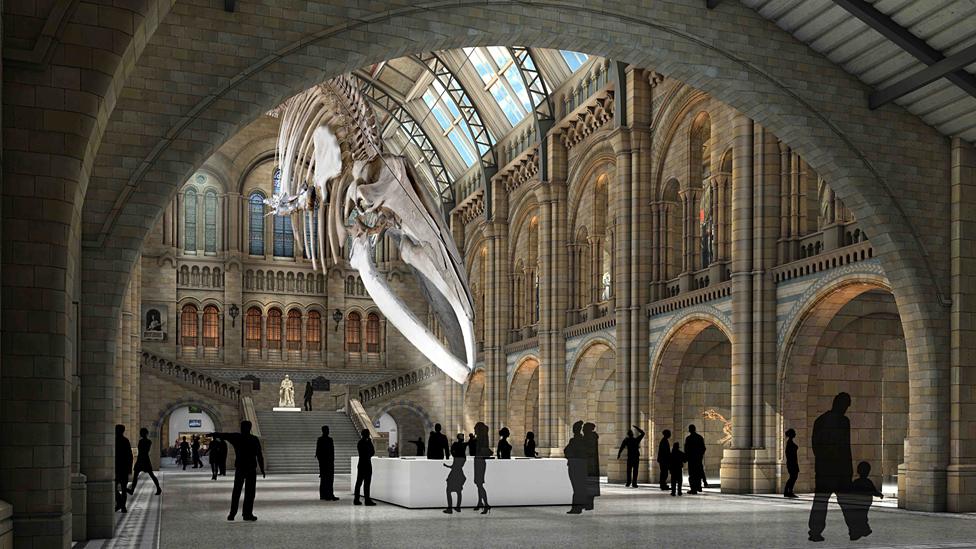Facelift for Natural History Museum
- Published
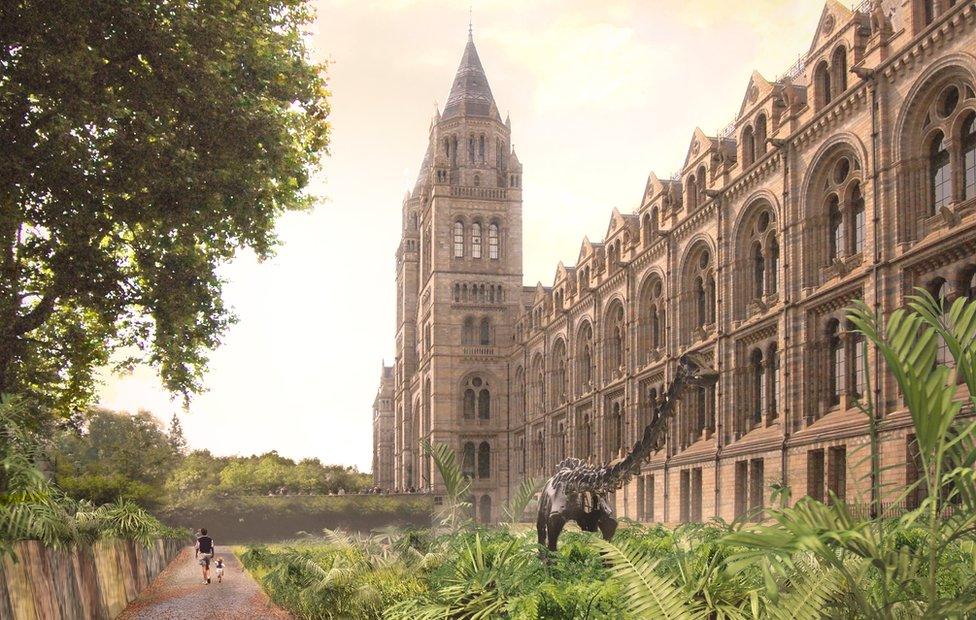
A new bronze Dippy will feature in the eastern grounds
The front grounds of London's Natural History Museum are to undergo a multimillion-pound redevelopment.
The landscaping, which is set to take place between 2017 and 2020, is part of an overall remodelling of the famous institution and tourist venue.
Officials say the gardens will reflect its key science themes of evolution, biodiversity and sustainability.
And there will be a new exterior position for the NHM's emblematic Diplodocus - "Dippy".
However, this hugely popular plaster-cast skeleton will have to be remade in bronze if it is to survive the elements.
The museum is opening an exhibition on Thursday to show visitors its plans, which have been drawn up by Niall McLaughlin Architects.
Directing flow
Justin Morris, the NHM's director of public engagement, said the redevelopment would hopefully address one of the main complaints about the museum, which concerns access.
"We have a practical reality which is that we now have 5.5 million visitors a year, and for 50 days a year we are at capacity, which means people can be queuing for up to an hour and a half," he told BBC News.
Justin Morris and Sandy Knapp discuss the redevelopment with Jonathan Amos
"It's the one thing people tell us they really don't like. We want even more people to engage with the museum, the collections and its science - but that is going to be a challenge unless we tackle these issues about access and circulation."
The redevelopment should better direct the flow of people around and into the NHM. It will see a new entry point to the grounds via the pedestrian tunnel coming from South Kensington Tube station.
The museum recently adopted a guiding strategy that champions what it calls its "three great narratives".
These cover the origins and evolution of life, the diversity of life on Earth today, and the long-term sustainability of humans' custodianship of the planet.
The decision to re-hang the main entrance hall in 2017 with the skeleton of a blue whale is part of this strategy. The giant cetacean, which very nearly became extinct in the last century, is seen as having something very significant to say on all three narratives.
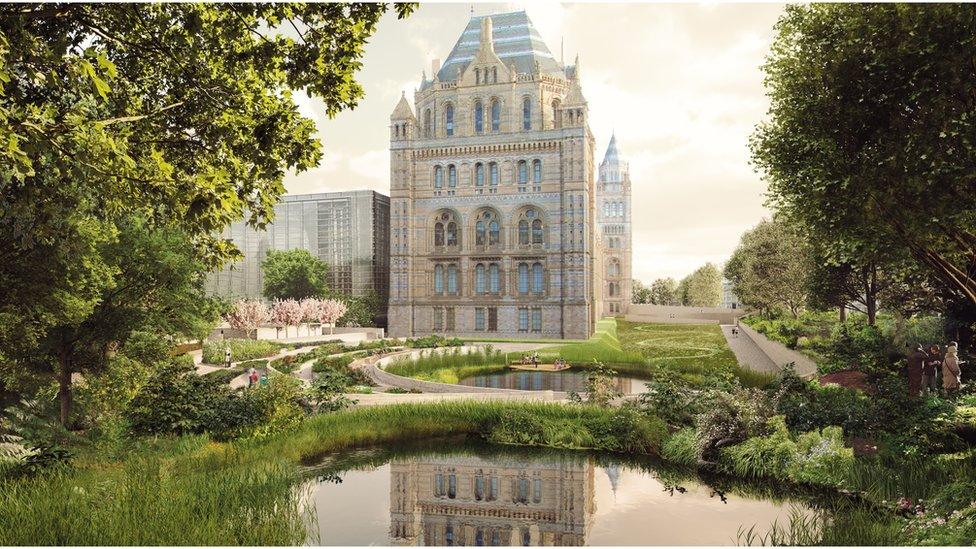
The western end will reflect more modern environments
Likewise, the front grounds will also now be modelled on the major themes.
Look at the façade of the iconic Alfred Waterhouse building and you can see sculptures of extinct creatures on the eastern wing, and extant (living) creatures on the west.
The intention therefore is to mirror those perspectives in the gardens below.
In the east, where the bronze Dippy will stand, will be a geological walkway. The stonework and planting will echo past epochs. There will be a lot of use of ferns, cycads and flowering plants that have a long history.
In the west, on the other hand, more modern environments will be emphasised, with the use of plants one might find around watercourses, meadows and in woodlands.
Dr Sandy Knapp is a botanist and lead scientific advisor from the NHM.
She told BBC News: "One of the great things about this is that the museum's trustees and directors have really got behind the idea that we should be doing science in these gardens. They are not just a public amenity space. This is all about what we are as an institution."
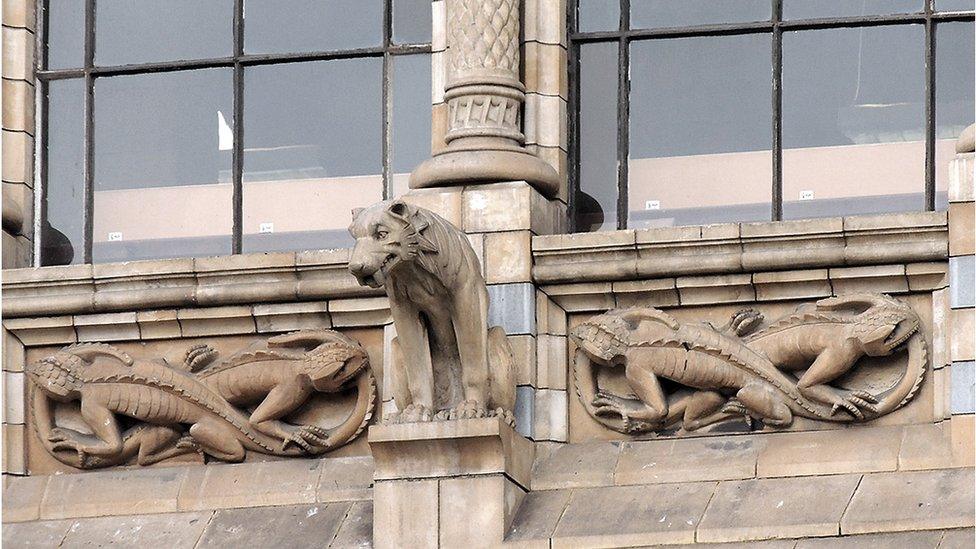
The eastern façade features extinct creatures like sabre-tooth cats
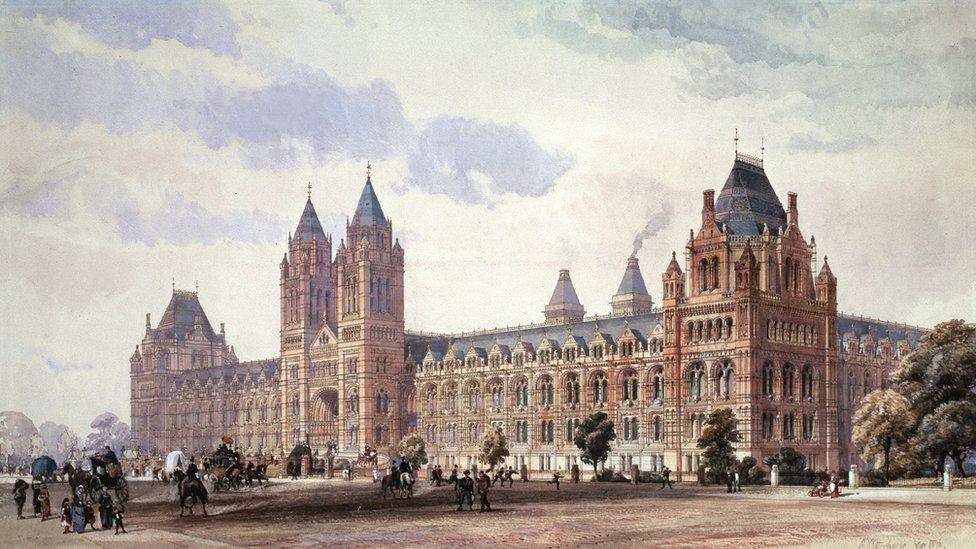
The Alfred Waterhouse building is one of London's major architectural jewels
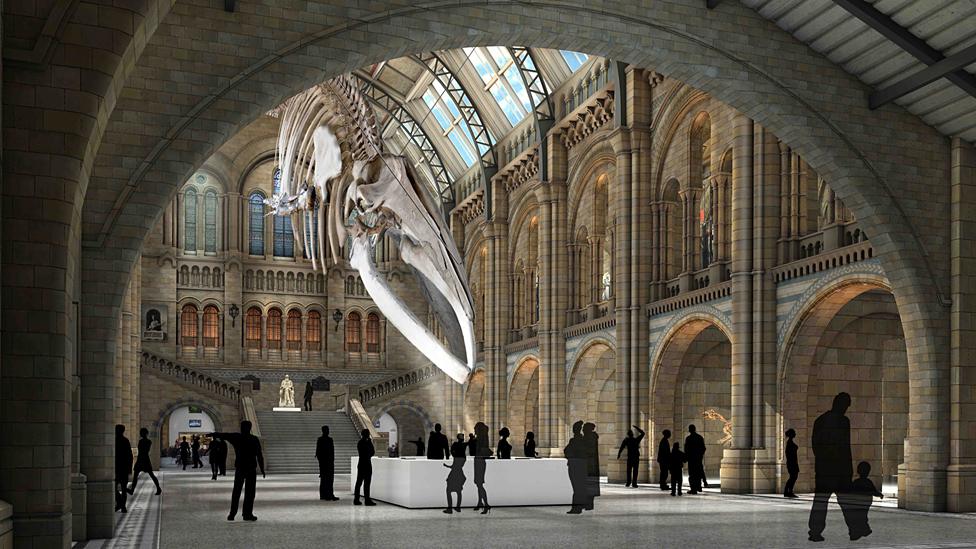
The blue whale skeleton, due to be hung in 2017, represents the museum's major themes
Jonathan.Amos-INTERNET@bbc.co.uk, external and follow me on Twitter: @BBCAmos, external
- Published29 January 2015
